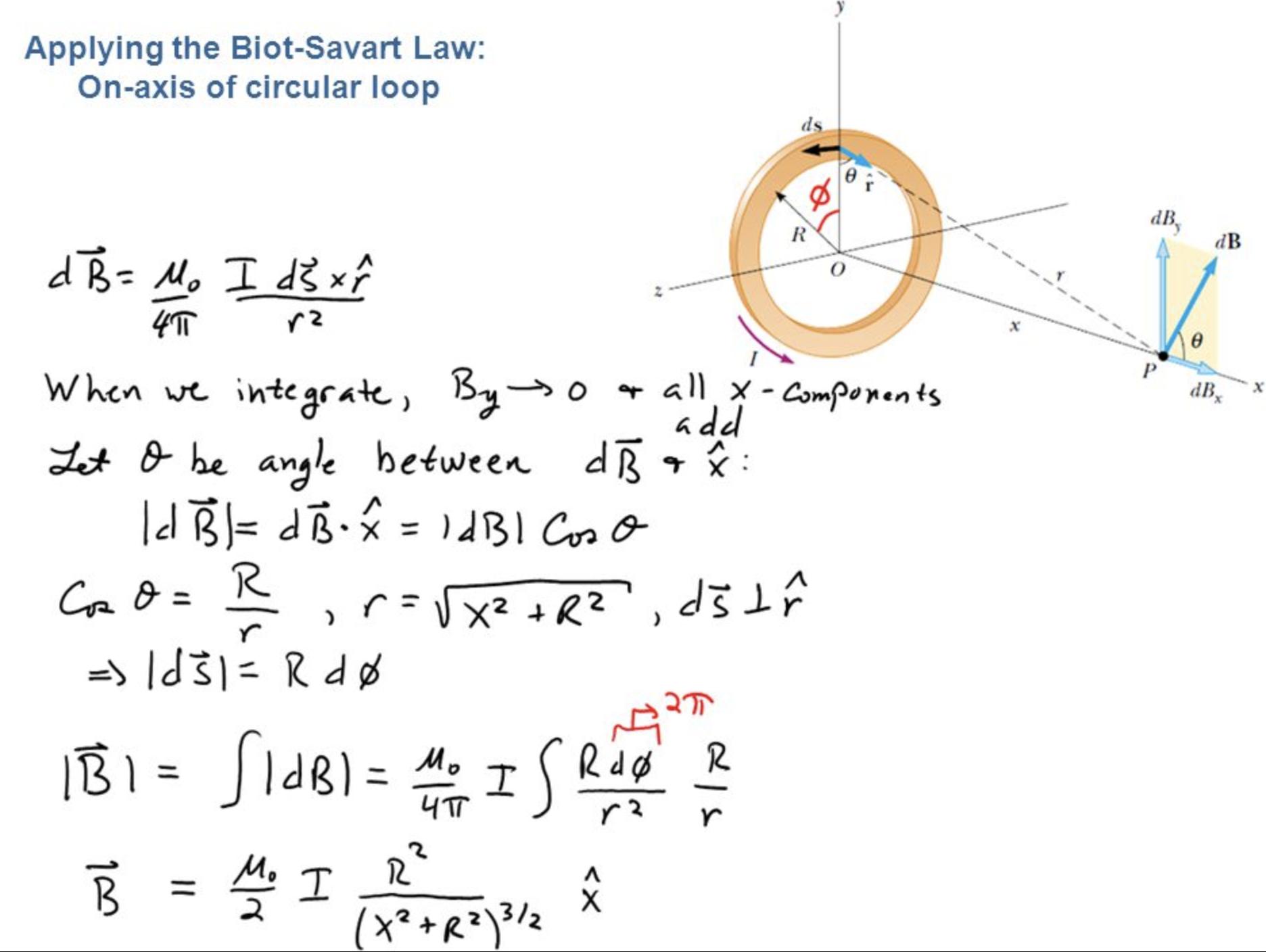

 Hello :), as you can see in the third picture, I drew a circle on the glass plate in the second picture and measured the magnetic field strength at the black point in the third picture when passing the current through the copper wire. However, although I tried using the Biot-Savart Law when the distances from the P point to the coil are all the same in the first picture and understood how I should calculate it, I have no idea how to calculate the magnetic field strength in the third picture where the distances change (You can assume that the multiple wires are just one single copper wire for simplicity). Could you please please help me with it through detailed mathematics? Thank you!
Hello :), as you can see in the third picture, I drew a circle on the glass plate in the second picture and measured the magnetic field strength at the black point in the third picture when passing the current through the copper wire. However, although I tried using the Biot-Savart Law when the distances from the P point to the coil are all the same in the first picture and understood how I should calculate it, I have no idea how to calculate the magnetic field strength in the third picture where the distances change (You can assume that the multiple wires are just one single copper wire for simplicity). Could you please please help me with it through detailed mathematics? Thank you!
-
\$\begingroup\$ These days we just write some discrete, finite-step Python code for that. Are you looking for a manifold of some kind that maps out closed solutions for arbitrary points in space? \$\endgroup\$– jonkCommented Sep 29, 2022 at 9:27
-
\$\begingroup\$ @jonk Yes, that'd also be great because that means the Phyton code was derived mathematically. \$\endgroup\$– JayCommented Sep 29, 2022 at 9:41
-
1\$\begingroup\$ @Jay So you are okay with just simple, finite-stepping Python code? See here and have fun! \$\endgroup\$– jonkCommented Sep 29, 2022 at 9:49
-
1\$\begingroup\$ For those who tend to avoid youtube videos, @jonk 's link is to an excellent series made by a physics research student. The maths and python for this video are in his github here Many thanks for a great link! \$\endgroup\$– jonathanjoCommented Sep 29, 2022 at 10:15
-
1\$\begingroup\$ How did the magnetic field got visualized? did you put detritus/crumbs of metal between two sheets of glass? I see they do not touch your coil. Or is that a drawing? I want to know your setup hookup. \$\endgroup\$– Christianidis VasilisCommented Sep 29, 2022 at 11:04
1 Answer
The integration of the magnetic field is easy only on the axis of the coil and by assuming the coil is thin and circular. Even the field of a single circular loop cannot be written with elementary functions in the off-axis area. The Integral vector formula itself is the simplest way to present the field. It can be calculated numerically as already suggested by others.
The integral can be presented with well known elliptic integrals. You can find one discussion of it here https://tiggerntatie.github.io/emagnet-py/offaxis/off_axis_loop.html
Mathematicians consider elliptic integrals simply as an extension of the set of elementary functions and before the era of "computer on every desk" they were available for practical calculations as numerical tables just like sin, cos, exp, log etc...
-
\$\begingroup\$ Thank you so much!! I found the website so useful. However, by any chance, do you happen to know where I can get the derivation of the formula written on the website? Bx=B01πQ√[E(k)1−α2−β2Q−4α+K(k)] Br=B0γπQ√[E(k)1+α2+β2Q−4α−K(k)] Also, to get the magnetic field, do I just use the Pythagorean theorem and combine the radial and axial fields? \$\endgroup\$– JayCommented Sep 29, 2022 at 11:58
-
\$\begingroup\$ You must expand the vector cross product formula of the dB to get its rectangular components and integrate them separately. I have never bothered to handle formulas as complex and cannot tell any place where it's done in details. Because components Br and Bx are perpendicular you get from them easily for visualization as well the direction of the resultant field and its strength as elementary vector algebra tells. \$\endgroup\$– user136077Commented Sep 29, 2022 at 12:35
